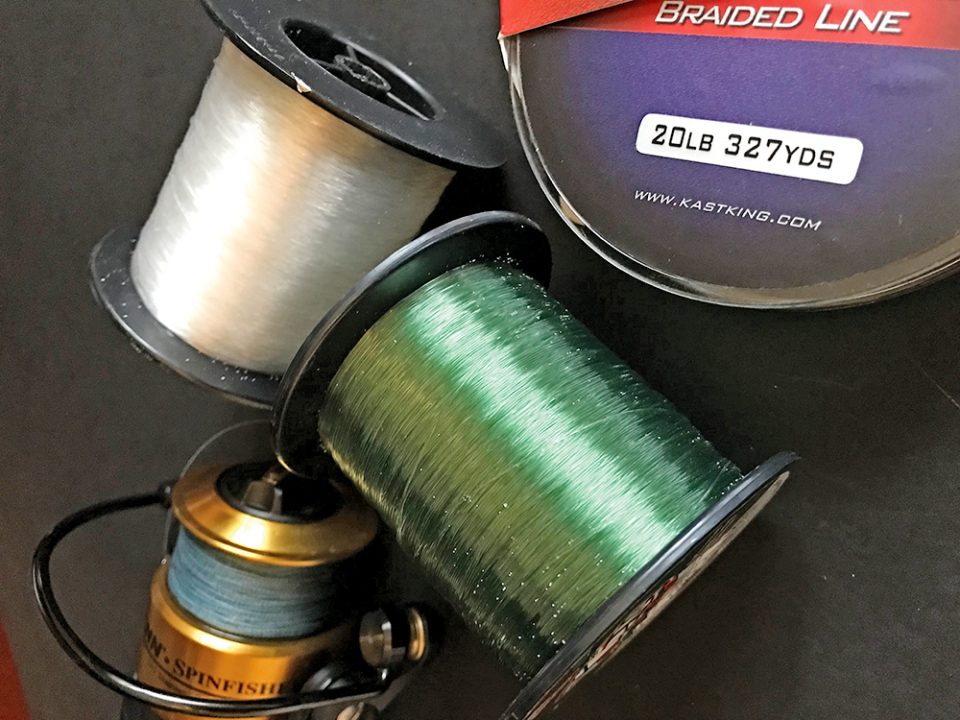By Chris Beardsley
Braid or monofilament? It’s an age-old question that continues to be debated and usually one I steer clear of. The decision to use either doesn’t have to be an all-or-nothing approach, but more of a compromise. For some, the decision to switch to braid can be attributed to its extremely thin diameter and greater casting distances but also because of its durability. Others I’ve spoken with, however, believe monofilament provides the best value and whatever gains are to be had using braid are minimal and negated by the higher cost.
With all the information available, from a performance and functional perspective, braid seems to be the obvious choice over mono, but there are exceptions. Braid is much thinner than comparable mono line, allowing for greater spool capacity, and unlike mono, braid virtually eliminates line stretch. The zero-stretch quality is especially important for solid hooksets when fishing deep structure or fishing long lines from the surf. Braid’s zero-stretch gives the angler a virtual direct connection to the terminal tackle and along with it, unmatched sensitivity and solid hooksets.
As mentioned, a key attribute to braid is its durability and resistance to abrasion. Though braid will fray, unlike damaged monofilament, it maintains much of its structural integrity. That’s not to say you should neglect damaged braid, but it will hold up much better than similarly damaged mono.
These are distinct advantages for sure, but a case for mono can be made. I love monofilament for fish finder, Carolina and drop rigs. The extreme suppleness and thread-like flexibility of braid is often considered an advantage, but it also allows currents and tides to tie amazing knots in drop or bottom rigs. The knots take on a life of their own with several wraps around steel leaders, lead weights and hooks. The now-tangled mess usually entails cutting everything off and re-rigging. This scenario is very uncommon using only mono for these same rigs. Countering the zero-stretch of braid is mono’s ability to stretch. Solid hook sets are great, but over-zealous hook sets can result in pulled hooks or break-offs.
So, is there a happy medium or compromise? Yes, using a mono top shot is the answer. The top shot consists of a length of mono tied to braid backing. The top shot can range from a few winds around the spool to 200 or 300 yards for extreme trolling situations. For most fishing, however, a few dozen yards (or less) are all that’s required. This combination allows for reels to be spooled with hundreds of yards of braid coupled with a relatively short length of mono leading to the terminal tackle. Since the brunt of abuse is seen by the mono top shot, it’s no longer necessary to replace an entire spool of braid. Simply replacing the top shot as necessary saves time and money.
A compromise? Maybe, but for all the right reasons this combination is truly the best of both worlds.
